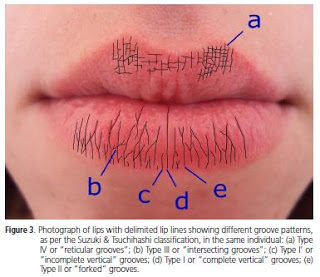Odontologia

- Evaluation Of Palatal Rugoscopy In Dentulous And Edentulous Cases For Human Identification In Forensic Dentistry
ABSTRACTThe search for identity is based on a set of characteristics, which defines the uniqueness of a person. Principles such as classificability, immutability, persistence, practicability and uniqueness must be considered when applying an identification...
- Anatomical Variations In The Permanent Mandibular Canine: Forensic Importance
Abstract.Introduction: The uniqueness of dental morphology plays an important role in Forensic Odontology, especially for human identifications, in which a single tooth can provide information for dental identification. Objective: To...
- Dental Anomalies And Their Value In Human Identification: A Case Report
ABSTRACT Forensic odontology and anthropology provide valuable support with regard to human identification. In some cases, when soft tissue is destroyed, carbonized or absent for whatever reason, bones and teeth become the only source of information...
- Genetics And Molecular Biology: A Literature Review Of Forensic Dentistry Application
AbstractForensic expertise methodology normally used in different criminal investigation and forensic medicine field such as blood type, anthropologic analysis and forensic dentistry (dental records, X-rays, bite marks, among others) solved and will...
- Forensic Odontology Identification Using Smile Photograph Analysis - Case Reports
ABSTRACT: The identification of unknown human by smile photographs that show specific characteristics of each individual has found wide acceptance all over the world. Therefore this paper shows this situation reporting different cases which smile...
Odontologia
Human identification by means of conventional and digital Cheiloscopy: a study of the literature
Abstract
One of the areas of human identification is Cheiloscopy, the name given to the study of the lips, their characteristics (such as thickness, position of the grooves and grooves) and the record of the impressions left by them. There are variations in the layout of the lines and fissures of the lips, which are unique to each individual, permanent and unchanging. The lip print rarely changes, enduring minor traumas such as inflammation or sores. In criminal investigations, lip prints, visible through the presence of lipstick, can be found on glasses, napkins, clothes, cigarettes, indicating a relationship between the subject and the scene of the crime. Latent impressions may be revealed employing specific chemicals such as powder of silver and aluminum nitrate. Although it is not a very common method, Cheiloscopy may become very useful in forensics due to the extensive amount of valuable information that it brings. The objective of this study was to review the literature on the use of Cheiloscopy in human identification, using traditional and digital methods. It was found that the literature is still in need of studies in this area. The advent of new digital technologies can facilitate the implementation of technical expertise, generating speed and objectivity. New research studies are necessary, especially in the development of digital methods. The application of Cheiloscopy can greatlyhelp with Law, in the identification of living suspects and dead individuals. In the end the benefit will fall to society as a whole. Article published in: RGO - Rev Gaúcha Odontol., Porto Alegre, v.61, n.1, p. 113-120, jan./mar., 2013.
Author: [email protected]
Download full text.
loading...
- Evaluation Of Palatal Rugoscopy In Dentulous And Edentulous Cases For Human Identification In Forensic Dentistry
ABSTRACTThe search for identity is based on a set of characteristics, which defines the uniqueness of a person. Principles such as classificability, immutability, persistence, practicability and uniqueness must be considered when applying an identification...
- Anatomical Variations In The Permanent Mandibular Canine: Forensic Importance
Abstract.Introduction: The uniqueness of dental morphology plays an important role in Forensic Odontology, especially for human identifications, in which a single tooth can provide information for dental identification. Objective: To...
- Dental Anomalies And Their Value In Human Identification: A Case Report
ABSTRACT Forensic odontology and anthropology provide valuable support with regard to human identification. In some cases, when soft tissue is destroyed, carbonized or absent for whatever reason, bones and teeth become the only source of information...
- Genetics And Molecular Biology: A Literature Review Of Forensic Dentistry Application
AbstractForensic expertise methodology normally used in different criminal investigation and forensic medicine field such as blood type, anthropologic analysis and forensic dentistry (dental records, X-rays, bite marks, among others) solved and will...
- Forensic Odontology Identification Using Smile Photograph Analysis - Case Reports
ABSTRACT: The identification of unknown human by smile photographs that show specific characteristics of each individual has found wide acceptance all over the world. Therefore this paper shows this situation reporting different cases which smile...
